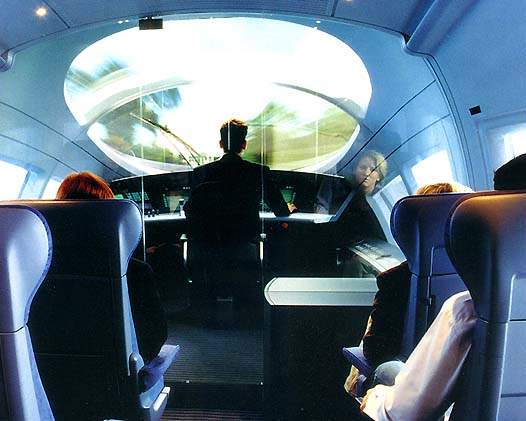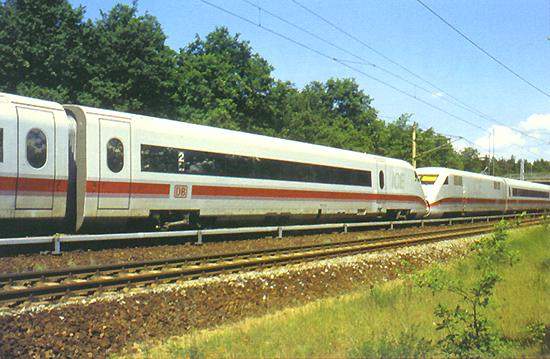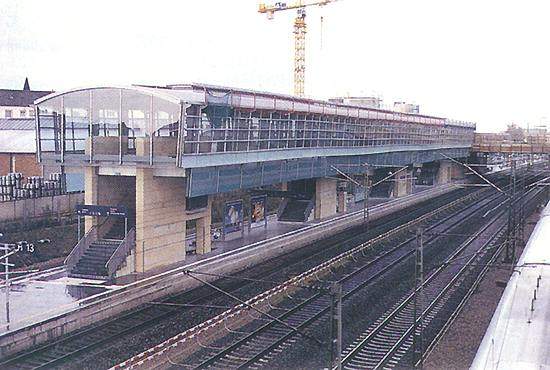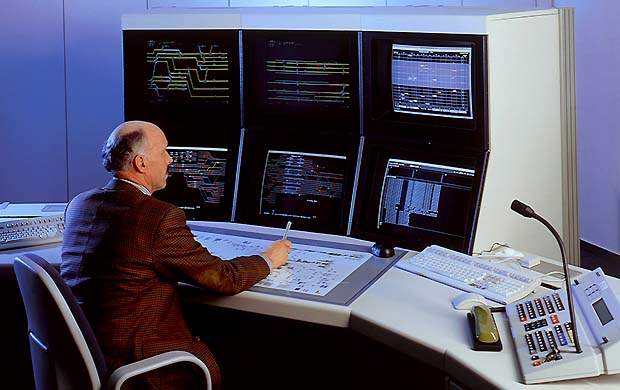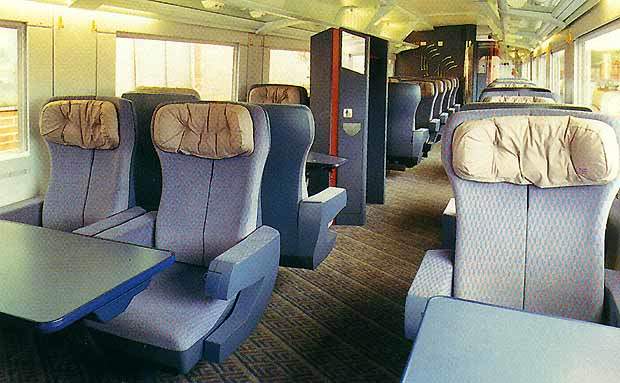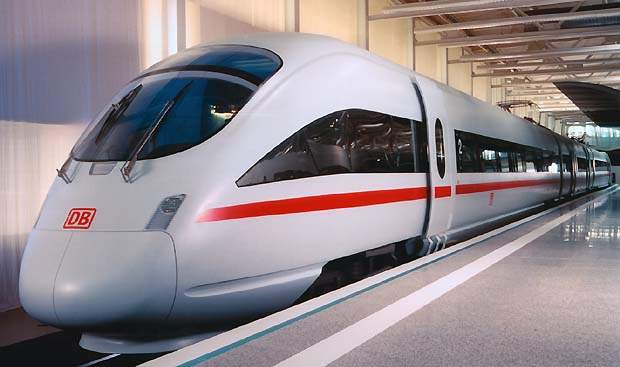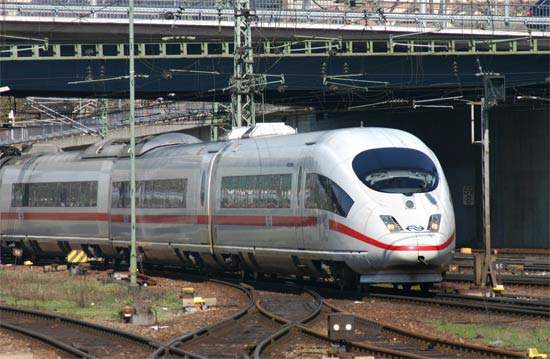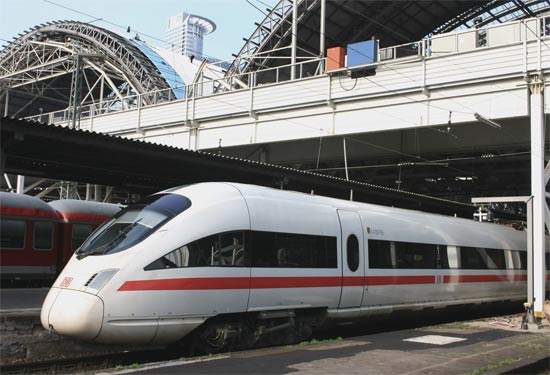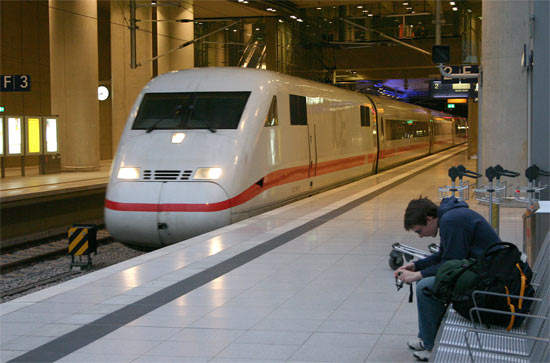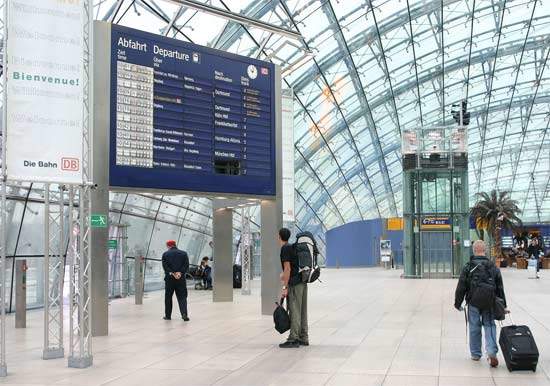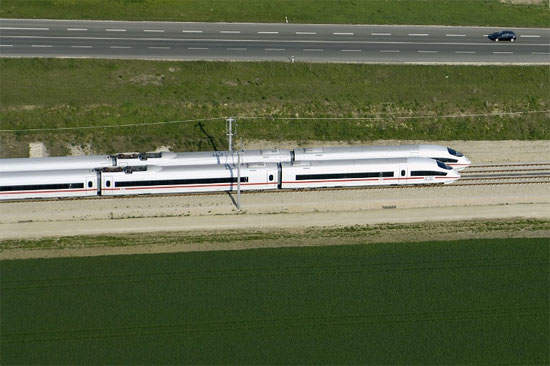Although Deutsche Bundesbahn raised speeds and passenger standards with Class 103 hauled InterCity services from 1971, even with extensive track upgrading, 200km/h (124mph) would be the ceiling for reducing journey times. Domestic airline competition and high-speed developments in Japan and France encouraged an assessment of long-term strategy for rail travel in Germany.
From trials with the experimental ICE-V in 1985 and by 1991 opening the first new-build route, Neubaustrecke (NBS), Germany has continued to develop its high-speed rail network and the InterCity Express (ICE) product.
A combination of ICE stock on NBS or the Ausbaustrecke (ABS) upgraded lines as well as on the conventional track, ICE was an established format before German unification in 1990.
Thereafter plans were reconfigured to take account of the resultant political, economic and social changes, with the merged Deutsche Bundesbahn and Deutsche Reichsbahn becoming Deutsche Bahn (DB) in 1994.
Established as DB Fernverkehr’s flagship, high-speed services are represented as ICE-Netz alongside InterCity and EuroCity. ICE rolling stock has extended operations to other EC countries and has been modified for export.
From being a name adopted from a now-defunct British Rail classification, 15 years on from its inception DB claimed ICE / Inter City Express as having reached 100% brand recognition and being central to the favourable impressions of rail travel in the country.
Infrastructure
With building begun in 1973, the first NBS considerably pre-dated ICE stock. Envisaged as accommodating high-speed freight as well as passenger flows, early NBS are relatively level compared to later builds which allow for the ICE3’s better power: weight ratio. To restrict gradients, routes like Hanover-Würzburg feature a high incidence of tunnels and bridges.
Dedicated rescue trains are stationed to deal with NBS incidents. Environmental considerations have affected the routing, construction and construction times of the lines. To concentrate adverse visual and noise aspects into already affected areas, NBS frequently accompany alignments of autobahns.
All lines are 1,435mm (4ft 8.5in) gauge and electrified at 15kV AC 16.7Hz. NBS line speeds vary, some 250km/h (155mph) with 280km/h (174mph) allowed for later running. Later lines are passed for service speeds of 300km/h (186mph). The lines have hosted world rail speed records, including that of the ICE-V in 1988 and a Siemens production OBB Class 1216 locomotive in September 2006.
Although actual NBS do not normally enter established main stations, lines are referred to according to cities at either end of the route:
- Hanover-Würzburg: 327km (203 miles), the first and longest NBS. With the later NürnbergMünchen upgrades, this creates a largely high speed route for Hamburg-München services.
- Stuttgart-Mannheim: 100km (62 miles). Mannheim’s approaches and a terminus layout at Stuttgart restrict acceleration of end-to-end timings for through services.
- Hanover-Berlin: 185km (115 miles) of new build, via Wolfsburg rather than the ‘classic’ route through Magdeburg. A symbolic piece of engineering following Berlin’s restoration as national capital, this and the earlier Hanover-Würzburg NBS enabled accelerated services to the south, albeit at much greater route length.
- Köln (Cologne)-Frankfurt am Main: 177km (110 miles). Severe gradients assume ICE3 capability or better. Shorter than the sinuous Rhine route via Koblenz that it partly replaces, this NBS also links Köln/Bonn and Frankfurt Main’s airports. Some services have code shares with airlines offering through flight connections. The new Köln/Bonn Airport link and station was part of the overall project but is not on a high-speed section.
- Nürnberg-Ingolstadt: 89km (55 miles). Almost entirely built with slab track, this is a shorter route than existing lines and offers reduced timings in conjunction with the 200km/h upgrade of Ingolstadt-München. From December 2006 the line featured the first Regional Express services (operated by DB Regio) operating at up to 200km/h. Using Class 101 former IC coaches, it cuts 48 minutes off the previous fastest Nürnberg-München RE timings.
DB launched new direct services from Thuringia / Saxony to Frankfurt Airport and to Mainz / Wiesbaden; from Bonn / Koblenz to Stuttgart and from Karlsruhe / Stuttgart to Dresden.
The extension of the Dresden-Leipzig-Frankfurt ICE line to Wiesbaden via Frankfurt Airport and Mainz is underway. Direct services to Frankfurt Airport from various German regions and additional IC services are also in the pipeline.
Zublin International carried out the construction of several sections of the New ICE railway line Cologne-Rhine / Main. Zublin’s contract included the redevelopment of the German motorway interchange and construction of two ICE railway tunnels crossing underneath the site.
The two ICE tunnels, 1,900m and 1,640m long, accommodate up to four tracks each. These tunnels were dug using open-cut tunnelling, cut-and-cover construction and mining techniques. The project also includes two bridges 420m and 750m-long and installation of non-ballasted track.
Rolling stock
The product of DB working in concert with Germany’s main mechanical and electrical railway suppliers, the ICE fleet has seen significant developments since production versions entered fleet service in 1991.
ICE 1 (Class 401) Max speed 280km/h (174mph) introduced 1991. Two power cars plus 10–14 coaches with distinctive taller ‘Bord Restaurant’. Wheel modifications were made following the Eschede disaster in June 1998. There has been internal refurbishment to match the standards of later stock.
ICE 2 (Class 402) introduced 1995. Max speed 280km/h (174mph). One power car plus seven coaches including driving trailer. Two such formations allow for splitting services for separate destinations after joint running over core routes.
ICE 3 (Class 403) introduced 1998. Max speed 330km/h (205mph). Eight coach multiple unit. This is part of the Siemens Velaro family that has attracted export orders from Spain, Russia and China. Improvements introduced on ICE3 include bogie skirts and fairings to screen brake discs and axleboxes aimed at a 10% reduction in rolling resistance.
Each ICE3 has three types of braking equipment (regenerative, disc and eddy-current) with axle-mounted disc brakes on unpowered bogies and wheel-mounted discs on each powered axle. Internal innovations include the first air-conditioning system not to use chemicals in the cooling process.
ICE3M (Class 406) Four voltage version for international operation. The units bought by NS link Amsterdam with Köln, Frankfurt Main and Basel.
ICE-T (Classes 411 and 415) introduced 1998. Max speed 230km/h (143mph). Seven and five coaches respectively. Visually similar to ICE3, but with less sharply raked ends. The T2 series has increased seating capacity and reduced catering provision. Tilt capability lends itself to demanding conventional routes such Stuttgart–Zürich and parts of the former DDR.
ICE-TD (Class 605) introduced 2001. Max speed 200km/h (124mph). Four coach tilting diesel multiple unit intended to bring extend the ICE network to non-electrified low-density routes. All withdrawn by 2003, these troublesome units were offered for sale abroad but have been re-introduced intermittently in Germany.
Launched in 2009, the new ICE Sprinter was designed to reduce travel times and crowding on the Dortmund-Cologne-Stuttgart-Munich line.
The future
A new high-speed ICE rail line project is set to undergo construction in Thuringia. It includes the construction of three tunnels with a total length of around 10km.
DB has approved Bilfinger Berger, a German construction and services company, to lead the consortium for constructing the tunnel. Out of the total investment of €290m, Bilfinger Berger’s contribution will be 40%.
The project mainly focuses on reducing travel times between Nuremberg and Berlin.

